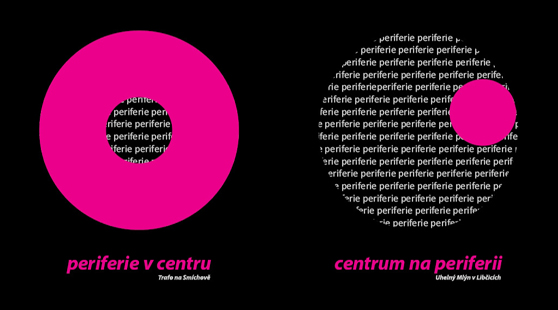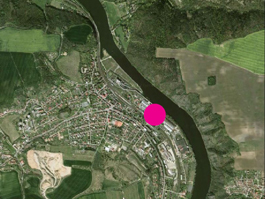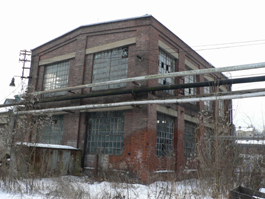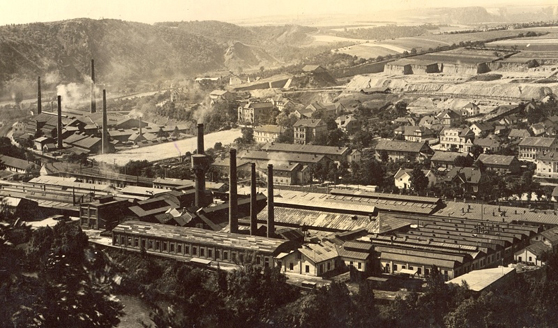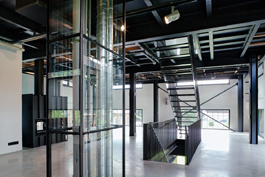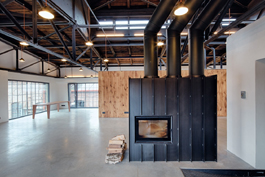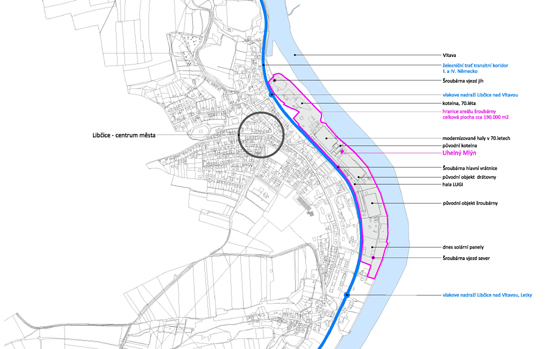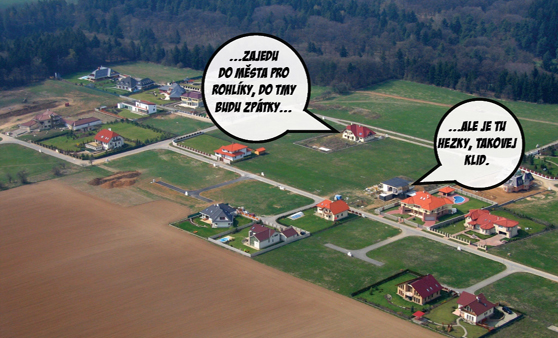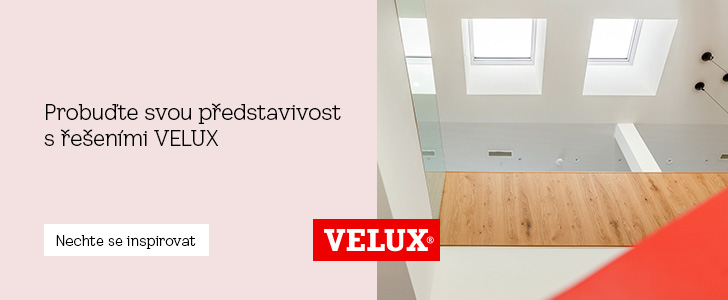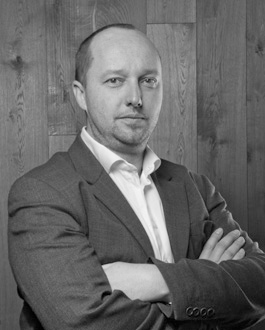
Patrik Hoffman graduated from the Faculty of Architecture at CTU in Prague, receiving further "education" through a joint firm he founded with Prof. Martin Rajniš...
In the interview, however, he does not return to the times when their H.R.A designed, among other things, the legendary Postovna on Sněžka or the Lamp Factory, nominated for the Mies van der Rohe Award, but reveals that what keeps him awake at night are the phenomena characteristic of today's movement in the Czech urban landscape and the landscape beyond the city... The absence of concept is one of the accompanying signs of the loss of homogeneity of settlements, another is the high social costs...
How did you evaluate your victory? It was a pleasant surprise for me because the award was given to a very simple project. The concept itself was almost trivial: Clean what can be cleaned – down to the very essence of the house and add what we need. Moreover, it was a very quick project, which may have been due to the location, but also the fact that I was a co-investor… Did this fact create conflicting situations during the design and execution? On the contrary. It was a challenge, among other things, to keep track of the money. Which was also helped by my experience from projects we had executed earlier. That helped me choose the right approach to access the funds we needed. And what was the cooperation like with the co-investor, the company Luigi? Also very smooth. They were able to manage the finances they were responsible for. Otherwise, the actual assignment – in terms of use – was fairly simple: our studio on top and storage spaces below for the products manufactured on the premises. By the way, what did you hope to achieve from the cooperation with the furniture company? Collaboration in which our studio draws the furniture while bringing in added value up to an art level, and the company Luigi delivers this atypical production. They will simply be able to produce what we design. And that also led to the assignment of the building's reconstruction.
Isn't it just a bit far from Prague to Libčice? We were long-term looking for a space for our other activities that we engage in besides architecture. And moreover, the combination of production and a studio has always appealed to me. I should add that we have always been interested in contemporary fine art, and increasingly my wife and I are also focused on design, plus we bring some architectural realizations down to the last detail, down to the last screw, including art. What is currently being produced in the area of the former screw factory? By the way, the entire area was built from bricks produced by a nearby brickworks, which Wienerberger closed barely after buying it... At one time, up to sixteen hundred people were employed here. Today, sixty work here. The production has thus been reduced. There are about five carpenters, locksmiths, but also companies that manage electronic data… The area is somewhat languishing and is actually searching for its use.
My involvement in the reconstruction of the studio is actually the last step from previous efforts. Let me start from the beginning: Sometime in 2006 – 2007, I started discussing with one of the council members who was considering the redevelopment of the area and looking for a strong investor. Libčice appealed to me greatly. You won’t find a place with preserved character in the wide area. Those places simply disappear… I also perceived Libčice as one of the few towns that maintained a certain intactness and also remoteness from satellite construction, which seems to not exist here. Although those pressures are there today… So the council member showed me Libčice, and I saw potential for future development in the spaces of the screw factory. It is a vast space of 200,000 m² between two train stations. In a way, the area, due to its immediate contact with the river, is the hypothetical core of Libčice: the city today lies as if behind the railway. In other words, it is a town by the river, yet not much operates by the river. But along the river, the entire screw factory area functions, thus gaining part of its charm… Then I found an investor who wanted to buy the screw factories from the owner, who is some Swiss banker… Unfortunately, the purchase fell through – and then the crisis hit… It was the year 2008. In the second chapter, my acquaintance on the council still did not want to give up his idea – and obstinately considered a way to draw attention to Libčice with its charm of life by the river. So in the end, we put together a project to rejuvenate the riverbank. Based on that, the city purchased land by the river from the Vltava River authority because we felt that the key to success is linking the town with the river.
... which offers new utilizations, for example, a connection to a network of cycling paths plus a harbor pier plus a somewhat provocative lighthouse structure, which aims to draw attention to this place. By the way, the Vltava river has always been interspersed with a network of lighthouses; for instance, at the tip of Mánes there is a chapel with a lighthouse. Maybe ours is too big, but it’s about drawing attention to the place, making it a magnet. Calling attention to the natural context and the fact that Libčice is a town just a stone's throw from Prague. Unfortunately, the council did not reach an agreement. Our case is thus an example of how things can turn out badly because two councils – the coalition and the opposition – cannot unanimously assess a certain quality beneficial for the whole municipality due to mutual antipathies... It’s sad that – formally – the only thing our project lacked was a signed contract between the Vltava River authority and the council. In summary, even that second step did not succeed – due to a disagreement in the council and ultimately a disagreement between the council and the state administration. Hence, I had no choice but to tackle it myself: that is, to initiate the renewal of the given environment. Not in the expected volume, but in a more tangible scale. That which could be developed into a feasible form. Something we could finance… Weren't you depressed by the development? How long are we talking about? All negotiations lasted from 2006... When I recall the beginnings, I remember that I plunged into this project quite headlong. It was more a matter of the heart for me than a calculated decision. I believed it was a place with potential and that the value lay elsewhere than in the initial investment. That it was a long-term endeavor.
REFLECTION or The main message that the reconstruction of Uhelný mlýn should convey By the way, that is what I miss in the planning of Czech towns – long-term thinking. Which reflects society’s behavior: many people are building their little houses in green fields at the expense of innocent countryside, only to realize later that they miss many things. Though someone keeps explaining it to them, they only believe it when they spend insane amounts of money and when new roads and infrastructure are built, which burden the state budget. So when we look at things from above, a country that is in debt and actually incapable of taking care of what it builds is creating new obligations. Meanwhile, it cannot utilize what is already there… Just look at the images of one satellite near Jesenice from the book Settlement Mash by Pavel Hnilička. The kilometers of roads and technical infrastructure, water supply, gas, electricity… Someone has to take care of that… It concerns routine maintenance, and perhaps even a complete overhaul every five years… By the way, is anyone monitoring those costs? How are the data from the Czech Statistical Office being used? In our country, a lot is said, but no one argues with real data. I'd like to find out how much maintenance costs. But I have nowhere to collect the data. True, thus undistorted information.
Probably to those who care about the fact that there are places worth revitalizing. For example, I would like to talk to someone who sees the chance of Libčice just as I do. And maybe they would become another co-owner of the area. And actually develop the concept. I suspect this may be too idealistic… Moreover, that fragmentation of power is not the best; in fact, it may even be counterproductive. Ideally, there should be one investor who gives the place coherence: but we haven’t found that person. By the way, when I go to Germany or Austria today, I am fascinated by how their landscape is inhabited in its entirety. Their infrastructure is in very good condition: every building is connected to roads, sewerage, gas, and water. This is, of course, dictated by an uninterrupted tradition – since World War II. In our country, when you travel through the landscape, you see that many settlements are completely deserted, and the infrastructure is poor. But new infrastructure is continually being built – in green fields. Which is simple building – but at the expense of the landscape.
And that’s where I wanted to get. To the point that there are places around us that are finished, have built infrastructure, streets, houses, trees, simply everything you need for life, and what otherwise takes ages to develop. But for many of us, this environment is unimaginable: when we come there, it is uninhabitable… or rather very costly to make it usable again. And when I compare places like our Uhelný mlýn with a satellite near Jesenice, it’s a choice to live on the edge of town, in a little house, versus choosing a certain place that has character and the potential of the city center. In other words, choosing a life where I have almost nothing to do with life, where I have almost everything, provided I can inhabit it correctly. Libčice has the character, size, and structure of a settlement that should be able to create conditions for the emergence and existence of desperately needed civic amenities. The absence of service offerings creates satellites from city centers… I believe that the construction of shopping centers is also to blame, as they function like vacuums for services and public life. And residents have to travel several kilometers for services. Thus, today's satellites resemble socialist housing estates… What is the reason for that? What do you see as the causes? Perhaps because for many people the situation is too complicated and involves complex cooperation with the architect. They lack the imagination of how such a building, for example, could be utilized. And they work with the idea of living in an apartment building or a little house, perhaps with a gable roof: it has the size they need, and they search for fulfillment of their individual vision this way.
Are Czechs individualists? Maybe. Perhaps a social probe into that environment is needed. Perhaps I am making a mistake by not following the television series Suburbs, or whatever it is called… The series set in a satellite. Personally, however, I think living there must be monotonous. In my opinion, a person degrades when they lack a certain quality of urban life around them… What does it mean to choose a job in the city and life outside the city? Actually, on the edge of the city, not even in the countryside, because often it’s just a garden behind a fence. The extreme of this separation continually surprises me: why don’t those inhabitants travel a path of work and life outside the city…? But I must also add that some satellites do function, and there is a community. This type can’t be generalized entirely. You ask why that is. What I say is that it’s important that society allows it. That there is a lack of something like a regulator of public interest. I miss that role here. Something like economic oversight. I understand that someone needs to meet their individual needs. But it shouldn’t be at the expense of the future existence of society. And sustainable development. From a financial perspective, I perceive it as a waste of public funds… I admit there are certain ideals in it. But an architect always thinks about which work to take and which not to take. And when to stand against and when it seems acceptable to them. And that is something an architect should probably be educated about. And shaped by certain values. And they should follow and present them… Or not? I feel that this is not about the individual. But that it’s about listening to each other. I feel that this doesn’t happen much… Which is, however, a very broad topic. Beginning with news on television… Someone should tell the management of Czech Television that these are terrible foolishness and should probably be banned. Or subsidies. I am incredibly annoyed that there is constant talk about tunneling. But there is no talk about positive examples of projects supported by subsidies. In the end, perhaps the invisible story is more valuable than the visible reconstruction of Uhelný mlýn. A story as an attempt to enter completed territory and become an example that it makes more sense to invest in Libčice rather than in a satellite near Jilemnice. Into that mess. And that this investment doesn’t need to be more expensive, but it brings something that you won’t find in that mess. And that is the environment. A finished environment that you will never build in that mess. And for that mess to become a Place, you need a lot of money, which you will never collect, and furthermore time like a hundred years. Just as it took for places in the Czech landscape. It always took some time. And that may also await that mess – I recently listened to some economist who said that even destruction can be something beneficial, such as a flood.
Some of the satellite residents want to move back to the city… But what will happen to their house? In Ireland, for example, the boom turned out such that completely new houses are being demolished. Because they brought significant problems. They stood in places where no one wanted to live, and thus it was cheaper to take them apart. So that could become a new business. But what about the infrastructure? It will be simpler to cut it off than to take care of it. It will serve its term – after all, it also has a lifespan. But that’s quite a terrifying picture. Certainly. Because it will cost us a lot of money. But it’s time to deal with it. Count the costs and benefits. And set the boundaries. By the way, I find Roman Koucký very inspiring regarding how he started to work with land use plans and the boundaries of buildable and non-buildable areas. It is one of the fundamental tools to prevent the spreading of cities into the countryside. Because we need that countryside for our lives. And I also do not think it is being treated well. To a certain extent, it is due to the uprootedness from communism – that fifty-year interruption, when personal and ownership ties to the place were severed. But it is also due to the fact that in the conception of land development and settlement, the idea was lacking that for places to live, they must have functioning infrastructure. And that is probably the main message that the reconstruction of Uhelný mlýn should convey. Thank you for the interview. Jiří Horský The English translation is powered by AI tool. Switch to Czech to view the original text source.
Related articles |



